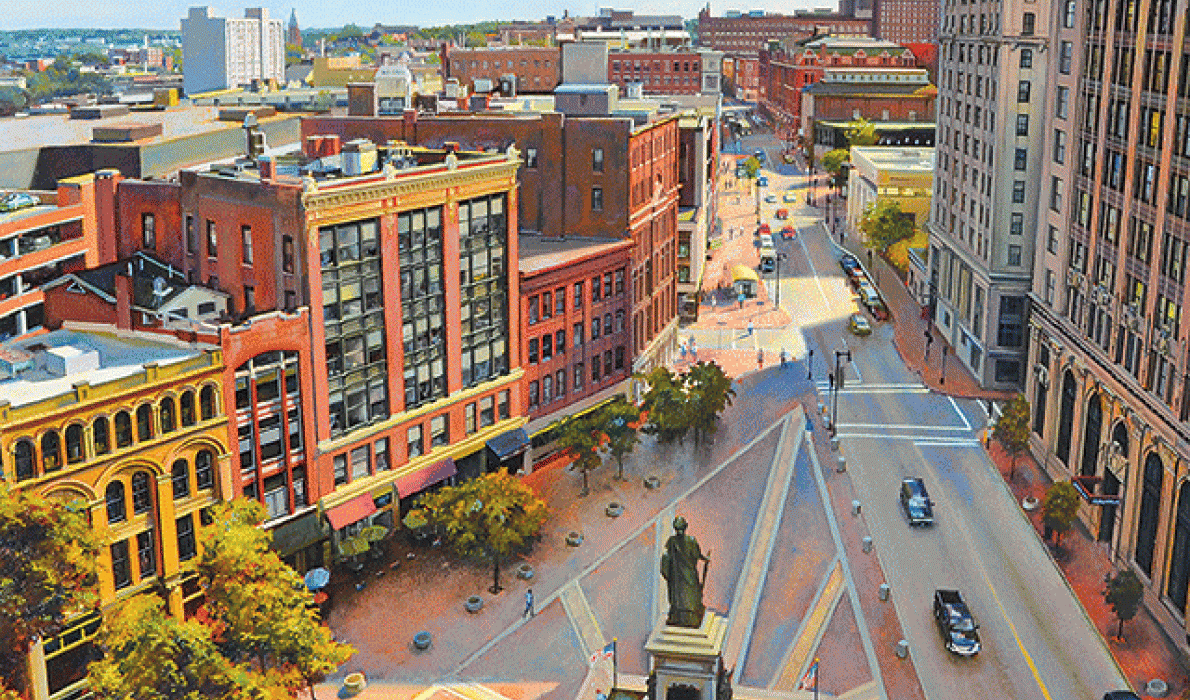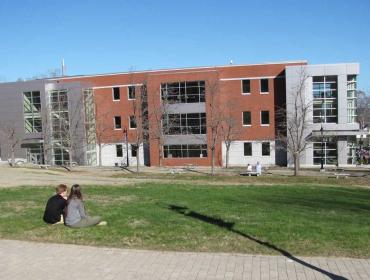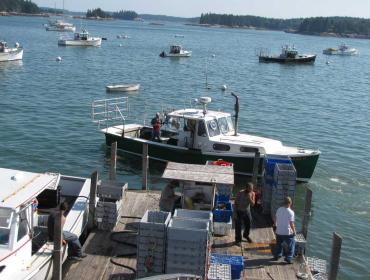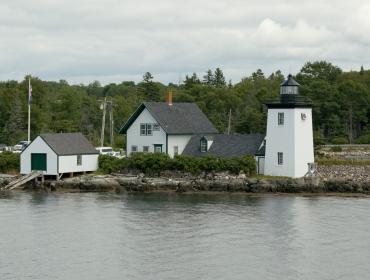Posted August 31, 2018
Last modified September 4, 2018

“Casco Bay Ferry Reflection,” by Sarah Knock
Paintings of Portland by Carl Little and David Little
DownEast Books, Lanham, Md., 2018; 140 pages, hardcover, $29.95.
"Portland gets its hooks in people," Jim Smethurst said to me one sunlit afternoon in 1978, “and won't let them leave."
We were standing on Middle Street talking about our fascination for the city itself, me the Mainer and Jim from New Jersey, both students, both hooked. Around the corner on Exchange Street was the Deli I, which we haunted for the jazz and the camaraderie of the off-the-radar artists and poets who were in Portland's thrall. They were all surfing the foam of the Kerouackian curl that swelled in the 1950s and soon broke over Portland too, turning it into an outlier destination for itinerant arts seekers.
The hooks were visible in the cityscape, if you knew how to look. In the undulating brick sidewalks. The steel-blue autumn corrugations between the Eastern Prom and Fort Gorges. The sleepy West End. Rollicking music in Mul's Irish Pub. Gauzy early morning walks through Deering Oaks, backpack full of books, to the USM campus. The whole city, in our young eyes, was a work of art in progress.

Robert Solotaire “Gray Street View”
To me, the vortex of this progress was at 85 Park Street where Bruce Holsapple and Peter Kilgore ran Contraband Press out of Bruce’s third-floor room and attracted poets, artists, musicians, lovers, muggers, and thieves. I met Michael Waterman there once, Matt Blackwell, poet Scott Penney and through him his dad, Bruce, the landscape painter. The scene radiated to the Portland School of Art, the Sidewalk Art Show on Congress Street which we prowled every August looking for glimpses of whatever was transmitting from the bones of the place. Newcomers sensed it, and stayed to live in it.
It turned out the energy we felt ran not just spatially up and down the peninsula, but in both directions of time. You can see what I mean in the reproductions of paintings from the 1800s through the 2010s in Carl and David Little’s book Paintings of Portland. Somehow Portland was still Portland long before it turned into Portland and afterward. In this book, if you can pick up the transmissions, you can see exactly what we saw. The force of the place is unchanging. Eternal.
The quiet West End I knew channels directly through “Gray Street View” (1979) by Bob Solotaire, whom I sometimes visited at his house off the Western Prom. You can detect the same vibrant quiet, larger, in Mary King Longfellow’s 1885 watercolor "Portland Skyline," where the very city itself, tan and angular, reflects precisely out of flat-calm Portland Harbor 90 years before us.
When I was a kid riding boats in the early 1960s, I saw the same shimmering "Casco Bay Ferry Reflection” Sarah Knock saw in 2016. In the 1970s I mulled the same bleak, shivering, gray “Time & Temperature” clock as Bill Woodman. Living on Munjoy Hill in the mid-'80s I trudged the same leaf-strewn walkways Alec Richardson found in “Morning Fog, Eastern Prom" 15 years later.

“Morning Fog, Eastern Prom,” by Alec Richardson
I owned the stark sunlight at Edward Hopper's “Two Lights” as a child in Cape Elizabeth. The winter cold and the stink of fish that shaped my boyhood courses directly through Tina Ingraham's “Boats Lining Custom House Wharf” in 2010. Chris Benerman's angular blue, abstracted view of the buildings, boats, and observatory in “Working Waterfront #9" is the same “soul of the city," as she put it in 2016, that I overlooked from an attic apartment on North Street in 1981. And Waterman’s sense of its dreaming catlike presence, its fear and threat, in "The Leopard"—I lived on that peninsula for years, too.
What I'm describing is not, of course, simply familiar images. What's coming through these paintings is Portland’s eternal force. Whatever it is deep inside the place that hooks people’s psyches, like leopard claws maybe, and doesn't let go. Whatever it is that overrides time, that spurred John Neal's shows in the 1800s, the Sidewalk Art Show, the Portland Show since 2002.
The shows come and go, shops and restaurants mask what's in the bricks, and some art reveals nothing at all. But there are images in Paintings of Portland that make the invisible visible. If you want to understand what for centuries has hooked people into the city of Longfellow's "lost youth," then look through this book.
Two years ago, Jim Smethurst sent me a poem called “Portland Dream.” In it, he rides a bike from his old place on Cumberland Avenue:
"I would have/never guessed that, of all places, I would try to pedal/back to this," he says, “surrounded by brick music,” past the proms, Deering Oaks, a ride "like/love as it ends or begins or curves on that long arc.”
We both departed the place in the 1980s. The hooks, it turns out, are almost too deep to imagine. Almost.
Dana Wilde lives in Troy. His recent book is Summer to Fall: Notes and Numina from the Maine Woods and can be purchased at www.northcountrypress.com/summer-to-fall. His email address is naturalist1@dwildepress.net.

"Time & Temperature," by Bill Woodman
Contributed by




